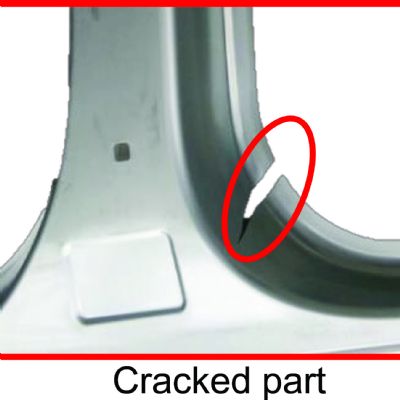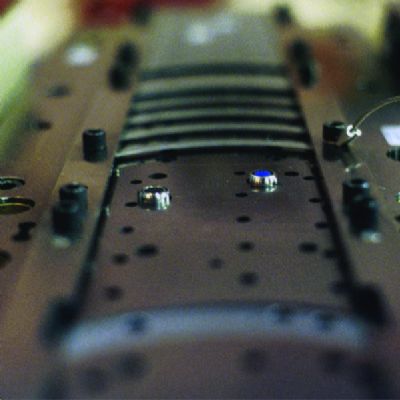Focus, Reflection and Refraction—Part 4
September 1, 2010Comments
One of the nastiest surprises that can befall an optical sensor application is the interplay between focus, reflection and refraction. These three properties of light and their interactions with a target, lens and optical sensor can cause havoc and much frustration if not properly accounted for in one’s bench top experiments. Let’s look at all three in detail.
1) Focus—As defined on Wikipedia, In geometrical optics, a focus, also called an image point, is the point where light rays originating from a point on the object converge. Although focus is conceptually a point, physically the focus has a spatial extent, called the blur circle. This nonideal focusing may be caused by aberrations of the imaging optics. In other words, whether it be a vision-system camera, a self-contained photoelectric sensor or a fiber optic/optical sensor combination, it is important that the object being detected appear as sharp as necessary to the detecting device.
Let’s say that you are interested in detecting breakage on the corner of a small punch. On your test bench you would mount the actual punch (or a very close simulation of the corner of that punch) and then carefully make sure that the light bouncing off that corner is in the best possible focus as it arrives into the lens of your detecting device. As stated above, the photons (or beam of light composed of photons) bouncing off the surface of that corner must arrive at a specific point in space where they converge into a sharp image. As also stated above, this point is an ideal with the reality many times being a blur circle or an out-of-focus zone as opposed to a point of light. The optics of the fiberoptic, the camera or the sensor itself may be the cause of this, but also, the geometry of the part can cause the light beam to converge not into a point but rather into a zone. An irregular corner on that punch will more than likely provide a focus challenge.
2) Reflection—Again using Wikipedia, reflection of light is either specular (mirror-like) or diffuse (retaining the energy, but losing the image) depending on the nature of the interface. Imagine your light source hitting the top of a form that you wish to detect. The light reflected from that form can arrive at your sensor as either specular, a sharp image of the actual form, or as diffuse, a scattering of photons which diffuse or spread out as they bounce off the form’s surface. If your application involves a vision system, then a sharp image would be beneficial, especially if you are looking for edge-to-edge measurements, surface imperfections and the like. If, on the other hand, you are simply detecting the presence or absence of the form in the first place, then a diffuse reflection may be adequate to make that detection possible.
3) Refraction—Per Wikipedia, refraction is the change in direction of a wave due to a change in its speed. This is most commonly observed when a wave passes from one medium to another at an angle. We have all experienced this when we are at the edge of a body of water. When you dip a fishing rod into the lake, the rod seems to have broken within the water. The speed of light in water differs from what it is in air. This difference accounts for the perceived distortion of the immersed fishing rod as the light waves are bent due to the differences between the speed of light in air and water. The same holds for a straw immersed in a glass of water. The straw appears to be broken due to the refraction of the light.
So who cares? What could the above possibly have to do with in-die sensing? Everything! Oil and/or coolants, even in minute amounts of it, may cause make-or-break optical sensor applications as the light is refracted unexpectedly. Dust, shavings, galling, etc. can cause light to improperly reflect off the target’s surface. Vibrations of tooling and/or parts may cause unexpected blurry reflections, leading to nuisance stops as the target goes in and out of focus.
It is paramount that one be sensitive to the effects of focus, reflection and refraction when working with photoelectric sensors of all types. As we saw in the previous installment of this series, color is nothing more than the vibrations of photons. This too can be quite challenging in some applications as the photoelectric sensor may be sensitive to variations of target colors. Coupled with focus, reflection and refraction, it then is understandable why I have advocated for decades the need to properly simulate the sensor application, first and foremost, on a test bench. To forego the bench test and simply mount the photoelectric sensor directly from its box and into a die, may be, at the very least, a most frustrating exercise in futility. Als bench test first. MF
View Glossary of Metalforming Terms
Technologies: Sensing/Electronics/IOT
Comments
Must be logged in to post a comment. Sign in or Create an Account
There are no comments posted. Sensing/Electronics/IOT
Sensing/Electronics/IOTEliminating Pressroom Waste—One Walk at a Time
Manuel Resendes June 10, 2025
Prime Controls’ DS-Flex—a Configurable, Versatile Double-She...
December 30, 2024








